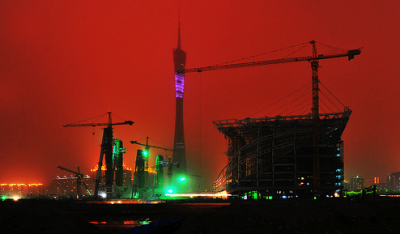Chinese investors in the resources sector are drawn to securing stakes in projects that are linked to supplying rapidly growing markets in China. Chinese investors also see going out into FDI as an investment in their future, as foreign ventures and firms in which they invest bring management know-how, technology and markets and have a positive impact on Chinese operational efficiency and corporate standing. The ‘going out’ strategy for Chinese enterprise promoted by the Chinese government over the last few years has encouraged this.
The scale and rapidity of the growth of investment in resource projects around the world has raised concerns about Chinese control over global resource markets. But while the growth of Chinese investment has been very rapid, China’s stake in world resource assets remains tiny. In Australia, one of the world’s prize destinations for non-oil resource investments, Chinese FDI is only around one per cent of the stock of all foreign investment.
Chinese FDI in the resource sector and other sectors brings benefits to host countries including the provision of capital, technology, know-how and access to markets. To Australia, for example, these benefits are substantial, given the scale, longevity and technological complexity that typify resources investments.
But is Chinese investment seeking to lock world resources away from other buyers and create a monopoly advantage for Chinese buyers? When Chinese companies take an equity stake in African oil fields, extend loans to mining and petroleum investors in Latin America, and write long-term procurement contracts for minerals and LNG from Australia, do these activities cut off other buyers from access to world supplies? Or rather, are Chinese investments, loans, and long-term contracts a positive influence for non-Chinese buyers, helping to multiply suppliers and open up new sources of raw materials?
In this week’s lead essay, Ted Moran of the Peterson Institute in Washington concludes that there is in fact no real evidence of predatory behaviour by Chinese investors in the global resources sector. Applying four rigorous tests he argues that popular concerns about Chinese locking up world resources for Chinese customers are unsubstantiated. This should not be surprising. The Japanese government, for example, entertained the idea of creating the country’s own major resource companies, or engaging in procurement arrangements with major resource companies and/or producer governments during the early resource struggles of the 1970s. But from the late 1970s through the 1980s, Japanese policies shifted toward procurement arrangements with up-and-coming producers, and Japanese investment, loans, and off-take contracts became a major force in enhancing the competitive structure of global extractive industries and diversifying the geography of production, continuing through today’.
That does not mean that there are not problems with Chinese resource investments in places where there are not strong domestic institutional and governance settings that allow the gains from foreign investment in the resource sector to be reaped.
China is on a giant learning curve in the recent growth of its investment abroad in resources and other areas. In industrial economies (as John Garnaut observes), Chinese investors are grappling with unfamiliar laws, regulations, labour markets and technologies. In developing nations with fragile institutions and government, particularly in Africa, navigating local political environments is a minefield, as it were. In South America and the Pacific Islands, with their traditions of local community rights, doing cozy deals with the state does not solve grassroots problems. For some of the important Chinese investors in the resources sector, Australia, with its robust institutions and stable environment, is proving a good setting to learn the ropes of foreign investment.
So far, China’s emergence as the world’s second largest single trader in the world economy has been managed successfully within the global system of trade rules and institutions. As Chinese business goes abroad, there are more complex interactions between the market and the state, at home in China as well as abroad. And there are no international institutions, like the WTO for trade, within which to manage these dealings. Despite the scale of these changes and China’s increasingly important role in the world, China’s economy is still an economy in transition, with wide-ranging reforms still in progress. This affects the way in which the market operates across all sectors of the economy. China also has a political system that is different from the broadly representative political systems that typify the established international powers.
These are among the big issues that now confront China and her global partners, and growing Chinese business abroad is a powerful catalyst both to reforming institutions at home as well as closer dialogue and cooperation internationally.

